
Roots
The tender years of childhood and adolescence shape the very ground upon which an individual stands. Within this delicate period, the subtle and overt judgments cast upon one’s hair can ripple through the deepest channels of self-perception, leaving lasting impressions. For young individuals, especially those with textured hair, the experience of hair discrimination is not a fleeting discomfort; it is a profound societal whisper that can distort their burgeoning sense of self.
This exploration peels back the layers of these experiences, revealing how outward perceptions of hair sculpt inner worlds, sometimes with quiet pain, other times with an enduring resilience. We seek to understand the intricate psychological landscapes that form when a crown of coils or waves becomes a subject of scrutiny, rather than a celebration of natural design.

How Does Hair Discrimination Shape Identity in Childhood?
From the earliest school days, a child’s hair can become an unexpected battleground. School policies, often steeped in Eurocentric beauty ideals, frequently penalize hairstyles natural to Black and mixed-race children, such as locs, braids, or afros. These institutional regulations, alongside the sometimes-unthinking comments of peers or even educators, transmit powerful messages about what is considered “acceptable” or “unruly.” When a child is told their natural hair is “messy” or “unprofessional,” they begin to internalize a dissonance between their authentic self and the world’s expectations.
This constant negotiation can foster a fragile self-image, where the beauty of their natural texture is questioned, leading to feelings of inadequacy or shame. The very foundation of their identity, often tied to their heritage and appearance, receives subtle cracks.
Hair discrimination, whether through policy or casual comment, can subtly erode a young person’s burgeoning self-worth.
A study published in the journal Body Image by researchers at Arizona State University unveiled a sobering reality ❉ Negative Experiences Related to Hair are Normative for Young Black Girls. Even girls as young as ten years old reported encountering these adverse interactions. A particularly telling finding from this research indicated that unwanted hair touching, a pervasive microaggression, was reported by 78% of 10-year-olds, 81% of 12-year-olds, and 70% of 14-year-olds.
Such persistent physical boundary violations, often accompanied by curious or critical commentary, send clear signals that one’s hair, and by extension, one’s person, is public property, subject to unsolicited inspection and judgment. This can lead to a sense of hypervigilance, where a child constantly anticipates and guards against such intrusions, further isolating them from their peers and their surroundings.

The Weight of Unspoken Expectations
Beyond overt rules or physical intrusions, young individuals often perceive the unspoken expectations surrounding hair. They observe media portrayals, listen to adult conversations, and absorb societal norms that subtly, or not so subtly, favor straighter, smoother textures. This continuous exposure can lead to a phenomenon known as Internalized Racism or “texturism,” where individuals begin to devalue their own hair type, viewing it through the lens of dominant beauty standards. This internalization is not a conscious choice but a gradual absorption of prevailing aesthetics.
It can manifest as a preference for chemically straightened hair or a desire to conceal their natural coils, even when they may personally admire their texture. The burden of this internalized bias can weigh heavily, influencing choices about styling, self-presentation, and even social interactions.
For many young people, hair becomes a silent arbiter of belonging. The pressure to conform to prevailing beauty standards can result in a disconnect from their cultural heritage, particularly for those whose hair is a visible link to their ancestry. This cultural severance, even if subtle, can deprive a young person of a vital source of strength and affirmation.
When a child feels compelled to alter their hair to “fit in,” they may experience a loss of authentic self-expression, dampening their spirit and sense of cultural pride. This struggle is particularly poignant when hair is seen as a “crown,” a symbol of identity, creativity, and resilience within Black cultures.
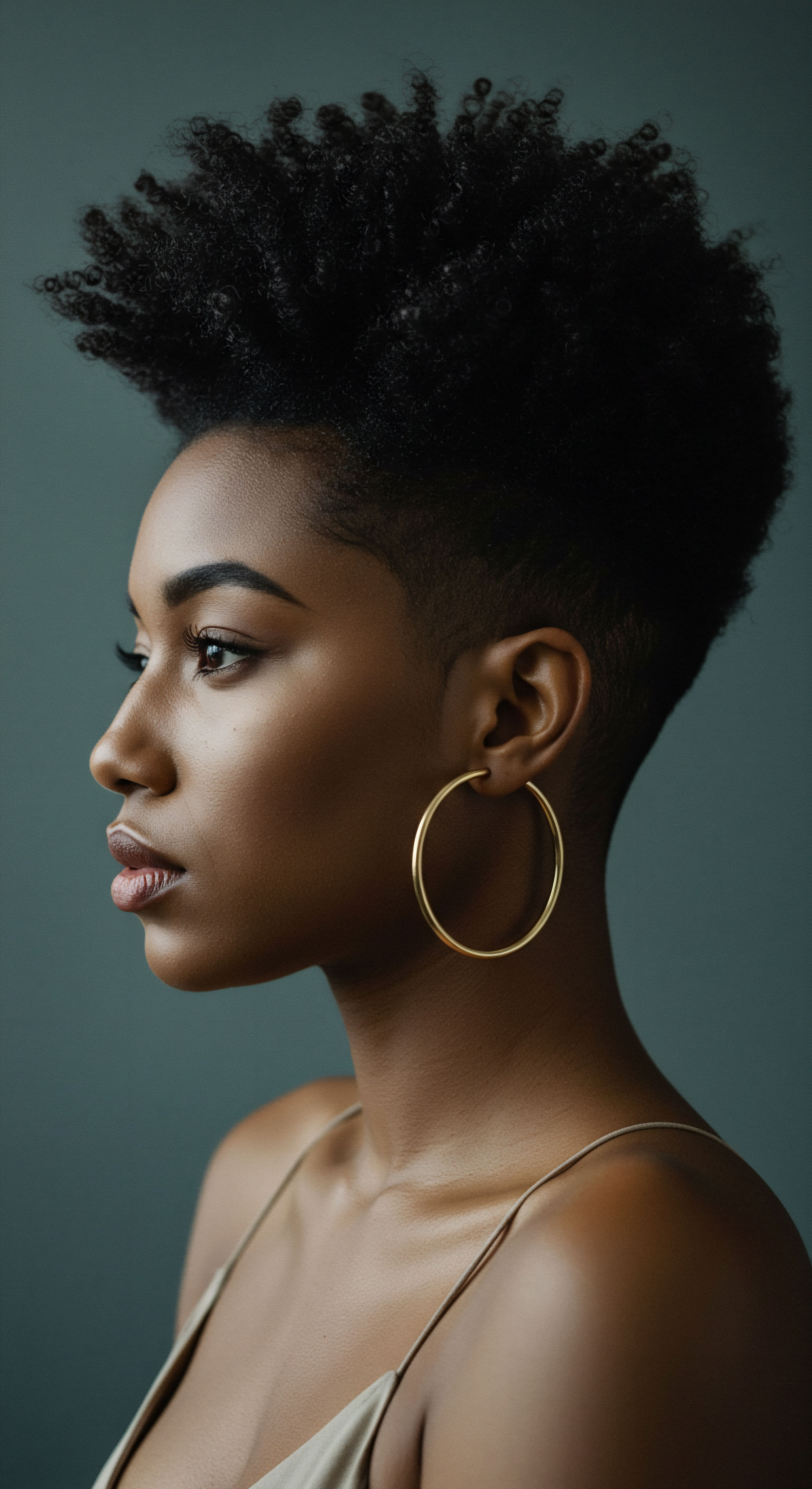
Early Perceptions of Hair and Self
The earliest years of schooling are foundational for a child’s self-concept. When discriminatory practices or comments about hair begin as early as five years old, as some studies suggest, the psychological repercussions can be profound. At this tender age, children are highly impressionable, absorbing messages about themselves from their environment. If their hair is consistently singled out as “different” or “problematic,” it can seed feelings of inadequacy and a diminished sense of personal beauty.
This early negative conditioning can set a trajectory for lower self-esteem and body dissatisfaction that persists into adolescence and adulthood. The child may learn to associate their natural appearance with negative attributes, creating a self-fulfilling prophecy of self-doubt.
The psychological impact of hair discrimination extends beyond personal feelings; it can also affect academic engagement and social interactions. When students face disciplinary actions or social ostracization due to their hair, their ability to fully participate in school life can diminish. This can lead to missed instructional time, reduced academic performance, and a weakened sense of belonging within the educational setting. The constant worry about how their hair is perceived can divert mental energy away from learning, creating a cycle where external judgments interfere with a child’s educational journey and overall well-being.
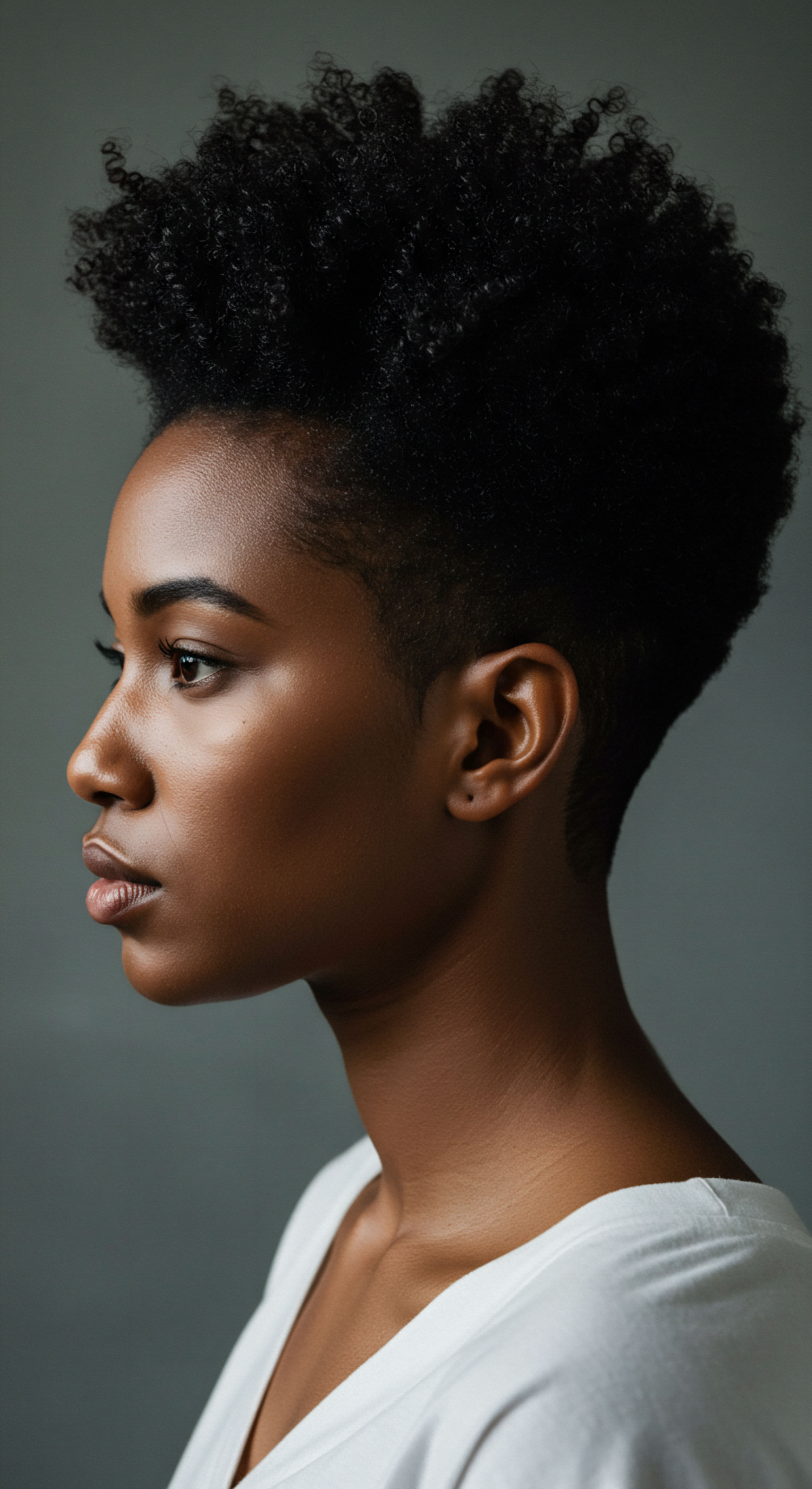
Ritual
Moving from the subtle roots of perception, we approach the tangible, daily rituals surrounding hair, where discrimination often manifests in deeply personal ways. For young individuals with textured hair, the routines of care and styling are not merely about aesthetics; they become moments laden with meaning, shaped by the societal gaze. This section explores how the practical aspects of hair maintenance become intertwined with psychological experiences, offering gentle guidance toward understanding the complex interplay between daily practices and emotional well-being. It considers how the choices made about hair, from wash day to protective styles, are often influenced by a desire to shield oneself from judgment, or conversely, to stand firm in authentic self-expression.

The Daily Performance of Hair
For many young people, particularly those with highly textured hair, daily hair care is a significant commitment. These routines, from detangling to moisturizing and styling, can consume considerable time and effort. When this dedication is met with criticism or misunderstanding, the ritual itself can transform from a moment of self-care into a source of anxiety. The pressure to present hair in a way deemed “acceptable” by others often dictates styling choices.
This might mean opting for styles that mask natural texture or require heat or chemical treatments, despite potential damage to the hair’s health. The choice becomes a balancing act between external validation and internal comfort.
The intimate practice of hair care often becomes a performance to navigate external expectations.
The phenomenon of “hair depression,” a term gaining recognition within the Black community, speaks to the deep emotional toll these pressures can exact. Young individuals, particularly those with 4B or 4C hair types, often internalize societal messages that their natural texture is “unkempt” or “ugly,” leading to feelings of inadequacy and a reluctance to leave the house if their hair is not styled to conform to Eurocentric standards. This can create a profound sense of self-consciousness, where a child’s mood and social participation are directly tied to the perceived acceptability of their hair. The ritual of getting ready, instead of being a source of pride, can become a daily confrontation with societal bias.

The Psychological Burden of Conforming
The decision to alter one’s hair to avoid discrimination carries its own psychological burden. For some, this might involve regular chemical straightening or excessive heat styling, practices that can compromise the hair’s integrity. Beyond the physical consequences, there is the emotional cost of suppressing one’s natural appearance.
This suppression can manifest as a subtle but persistent identity strain, where a young person feels they cannot fully be themselves in certain environments. The energy expended in maintaining a “conforming” appearance could otherwise be directed toward academic pursuits, social connections, or personal passions.
- Chemical Straightening ❉ The use of chemical relaxers, while a personal choice, often stems from a desire to conform to societal beauty standards that favor straight hair. This process can cause physical damage and contribute to an internalized belief that natural hair is not “good enough.”
- Heat Styling ❉ Frequent heat application to achieve straight styles can compromise the hair’s natural curl pattern and overall health. The psychological motivation behind this often relates to avoiding perceived negative judgments or microaggressions.
- Protective Styles as Negotiation ❉ While protective styles like braids or locs are celebrated for their health benefits and cultural significance, they can paradoxically become targets of discrimination, forcing young individuals to navigate complex social terrains even when seeking to protect their hair.
The constant negotiation around hair can lead to increased anxiety and hypervigilance regarding how others perceive one’s appearance. This state of heightened awareness can be draining, impacting a young person’s ability to relax, feel secure, and fully engage in their daily activities. It is a subtle but persistent form of stress that, over time, can contribute to broader mental health concerns.

The Impact on Social Connection
Hair discrimination can also disrupt social connections. Children may face teasing or bullying from peers, or even receive subtle cues of discomfort or disapproval from adults, based on their hair. These experiences can lead to social withdrawal, a reluctance to participate in group activities, or a general feeling of isolation. When a child’s hair becomes a barrier to acceptance, it can hinder their ability to form meaningful friendships and feel a sense of belonging within their social circles.
| Behavioral Manifestation Unsolicited touching of hair |
| Psychological Consequence Violation of personal space, feeling objectified, hypervigilance |
| Behavioral Manifestation Derogatory comments or teasing |
| Psychological Consequence Lowered self-esteem, sadness, shame, social anxiety |
| Behavioral Manifestation Exclusion from activities or groups |
| Psychological Consequence Feelings of isolation, rejection, diminished sense of belonging |
| Behavioral Manifestation Pressure to conform to specific styles |
| Psychological Consequence Identity suppression, disconnect from cultural heritage |
| Behavioral Manifestation These interactions underscore the pervasive nature of hair discrimination and its emotional toll. |
The cumulative effect of these daily interactions, whether in the classroom, on the playground, or in broader social settings, can be significant. It shapes how young individuals perceive their place in the world, influencing their confidence in new situations and their willingness to express their authentic selves. The rituals of hair care, instead of being a source of joy and self-affirmation, become a daily reminder of societal judgments and the need to navigate them.
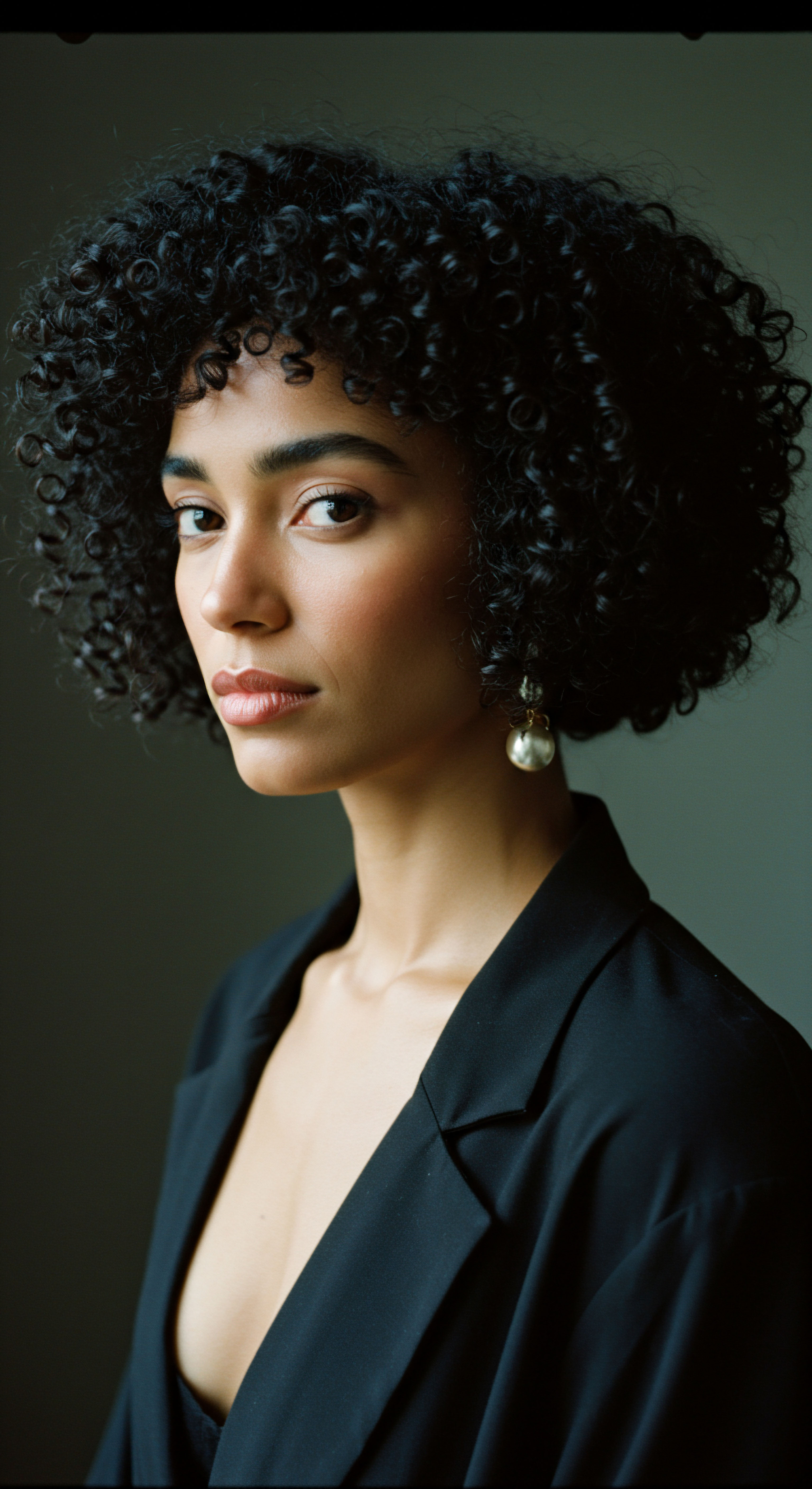
Relay
As we journey deeper into the psychological terrain of hair discrimination, we approach the intricate interplay of societal constructs, historical echoes, and individual lived experiences. This section endeavors to illuminate the less apparent complexities that this pervasive issue unearths, inviting a profound insight into how science, culture, and intricate details converge. It moves beyond surface-level discussions, drawing upon robust research and scholarship to provide a multifaceted understanding of the enduring psychological effects on young individuals. Here, we consider the generational transmission of bias, the neurological responses to chronic stress, and the subtle ways systemic prejudices shape a child’s inner world, all while maintaining Roothea’s characteristic warmth and intellectual curiosity.

How Do Societal Norms Impact a Child’s Psychological Health?
The societal norms surrounding hair are not accidental; they are deeply rooted in historical contexts, particularly the legacy of colonialism and slavery, which sought to devalue Black features and establish Eurocentric beauty standards as the dominant ideal. This historical conditioning has been relayed through generations, creating a subconscious framework where textured hair is often unfairly associated with negative attributes. For young individuals today, this translates into subtle and overt biases in schools, media, and even within some families.
When a child internalizes these messages, it can lead to what psychologists term “esthetic Trauma,” a deep wound to their sense of beauty and self-worth. This trauma is not merely about appearance; it penetrates the very core of their identity, influencing how they perceive their own beauty and value in the world.
Societal beauty standards, historically shaped by bias, transmit subtle wounds to young individuals’ self-perception.
The continuous exposure to these devaluing messages, whether through microaggressions or overt acts of discrimination, activates and prolongs the body’s stress response system. This chronic activation, particularly during formative developmental periods, can have tangible psychological consequences. Prolonged stress is linked to increased rates of anxiety, depression, and even self-harm in young people. The constant vigilance required to navigate environments where their hair might be judged or criticized creates a state of chronic stress, which can deplete emotional resources and hinder healthy emotional processing.

The Neurobiological Echoes of Discrimination
Research into the physiological responses to discrimination, though not always specific to hair, offers a lens into the deeper biological impacts. Chronic exposure to perceived discrimination can lead to dysregulation of the hypothalamic-pituitary-adrenal (HPA) axis, the body’s central stress response system. While direct studies linking hair discrimination to specific neurobiological markers in children are still emerging, broader research on appearance-based discrimination suggests significant correlations. For example, a study examining hair cortisol concentration (HCC) in children with mental disorder found that elevated HCC was associated with lower health-related quality of life, particularly in the domain of peers and social support, when a comorbid physical illness was present.
While this study is not directly on hair discrimination, it illustrates how physiological stress, reflected in hair cortisol, can correlate with psychosocial outcomes in young individuals facing challenges. The persistent stress from hair discrimination could, in theory, contribute to similar physiological responses, impacting a child’s overall well-being and their ability to connect with others.
Furthermore, the repeated experience of being “othered” due to hair can disrupt the healthy development of self-esteem and self-identity. Adolescents, in particular, are at a critical stage of identity formation. When their appearance, a significant component of their self-presentation, becomes a source of negative attention or disciplinary action, it can lead to internal conflicts.
They may grapple with questions of authenticity, belonging, and self-acceptance. This struggle is compounded when they witness peers with different hair textures receiving uncritical acceptance, highlighting the arbitrary and unfair nature of the bias they face.
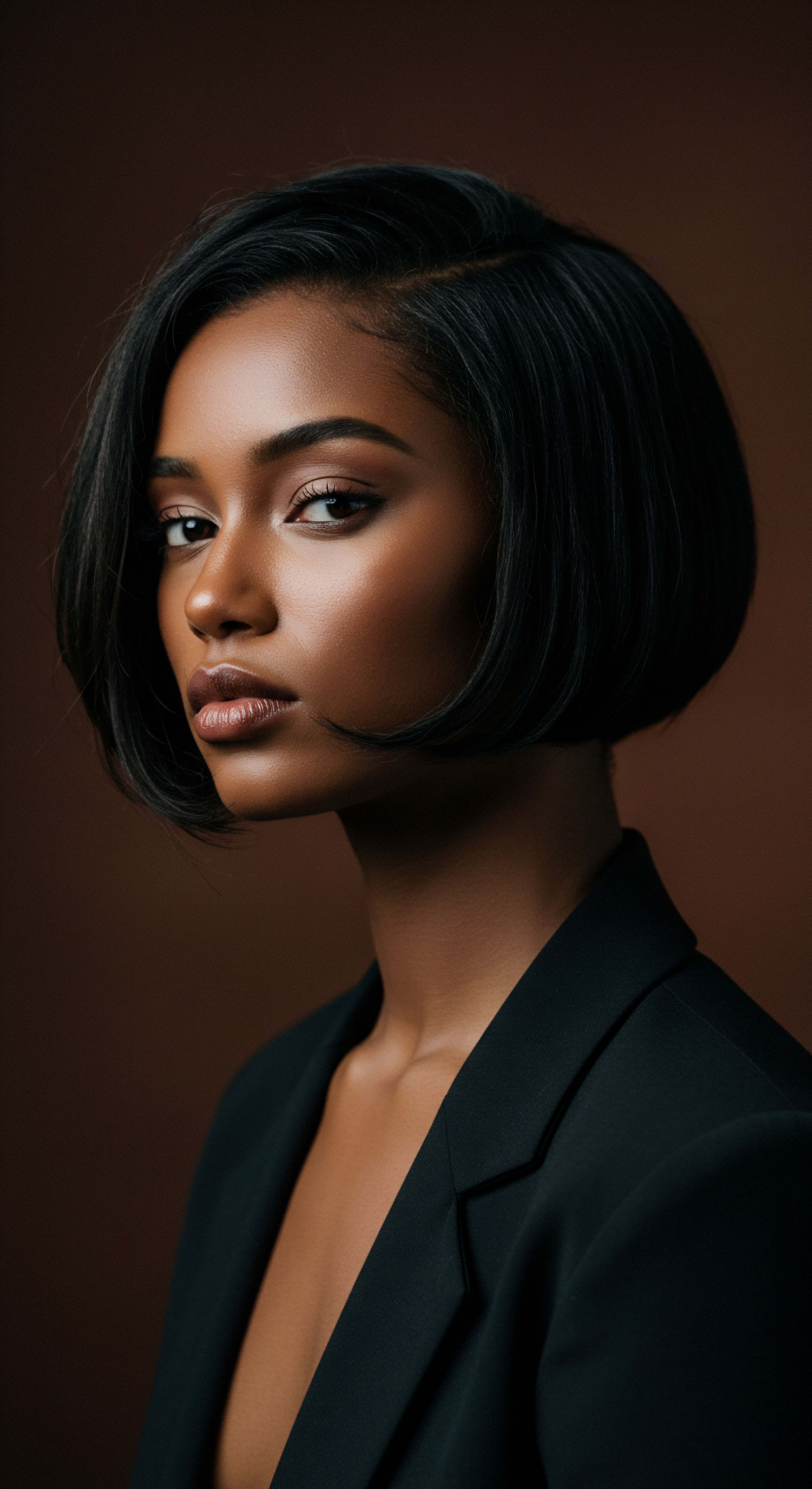
Intergenerational Transmission of Hair Narratives
The psychological effects of hair discrimination are not confined to the individual’s direct experiences; they are often transmitted across generations. Young individuals frequently hear stories from parents, grandparents, and other family members about their own encounters with hair bias. These narratives, while often intended to prepare children for the realities of the world, can also inadvertently instill a sense of apprehension or a predisposition to conform.
The phrase “good hair,” for instance, rooted in racist beauty norms, has shaped self-image for decades, even within families. This verbal socialization, combined with observed behaviors, can create a cycle where the trauma of discrimination is passed down, impacting a child’s perception of their own hair before they even step outside the home.
- Familial Discussions ❉ Conversations about hair often contain implicit or explicit warnings about how certain styles might be perceived in professional or academic settings, reflecting past discriminatory experiences.
- Styling Choices ❉ Parents, influenced by their own histories, might encourage styles that are deemed “safer” or “more acceptable” to protect their children from discrimination, even if it means altering natural textures.
- Internalized Beauty Standards ❉ Children absorb beauty ideals from their caregivers and community, which can include internalized biases against natural hair if those biases were present in previous generations.
The need for culturally sensitive interventions becomes apparent when considering this intergenerational aspect. Policies like the CROWN Act, which aims to ban race-based hair discrimination in schools and workplaces, represent a legislative step toward dismantling these systemic barriers. However, laws alone are insufficient.
There is a profound need for educational initiatives that challenge Eurocentric beauty standards, celebrate hair diversity, and provide safe spaces for young individuals to embrace their natural textures without fear of judgment. This includes hair-based professional development for teachers, hair-influenced educational curriculum for students, and community-based programming in hair care settings, all designed to counteract the pervasive effects of historical and ongoing discrimination.
| Psychological Domain Self-Esteem and Identity |
| Specific Impact Diminished self-worth, identity conflict, negative self-image |
| Psychological Domain Emotional Well-being |
| Specific Impact Anxiety, depression, sadness, shame, chronic stress |
| Psychological Domain Social Functioning |
| Specific Impact Social withdrawal, isolation, difficulty forming connections |
| Psychological Domain Academic Performance |
| Specific Impact Distraction, disciplinary actions, reduced school engagement |
| Psychological Domain The impacts are far-reaching, touching upon multiple facets of a young person's growth. |
Ultimately, addressing the psychological effects of hair discrimination requires a collective shift in perspective. It demands a recognition of hair as a significant aspect of identity and cultural expression, rather than a mere aesthetic choice. By creating environments where all hair textures are celebrated and respected, we can begin to heal the wounds of the past and foster a generation of young individuals who feel secure and proud in their authentic selves.

Reflection
The journey through the psychological landscapes shaped by hair discrimination reveals a poignant truth ❉ a child’s hair is never just hair. It is a canvas of heritage, a declaration of self, and often, a silent testament to the societal biases they navigate. To perceive the profound effects of external judgments on internal worlds is to recognize a deep call for collective empathy and conscious action. The path forward involves not only dismantling discriminatory policies but also cultivating spaces where every coil, curl, and wave is met with warmth and admiration, allowing young individuals to truly flourish in their own beautiful design.
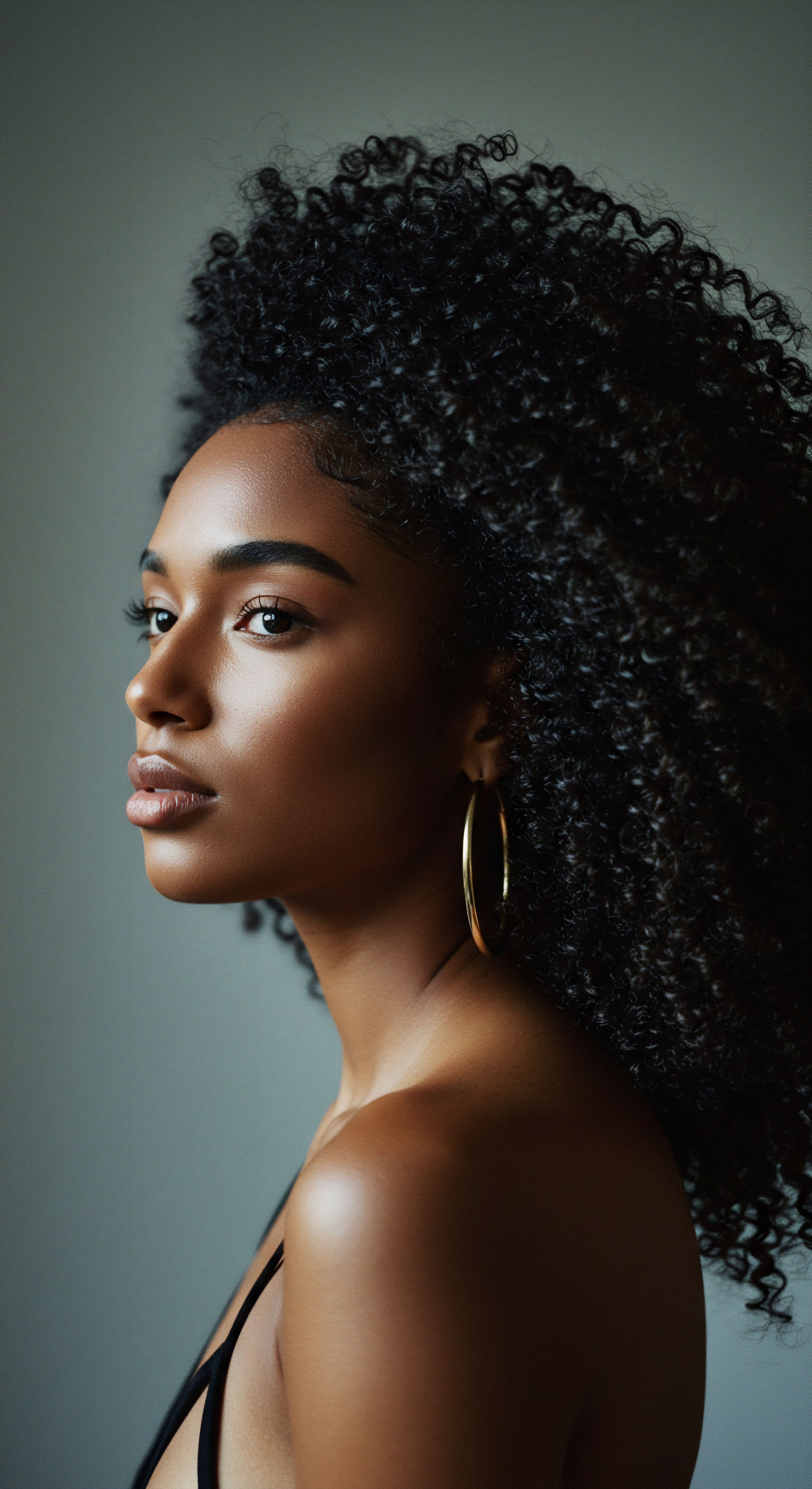
References
- The Person Beneath the Hair ❉ Hair Discrimination, Health, and Well-Being. PMC, 2023.
- Beyond the roots ❉ exploring the link between black hair and mental health. Research, 2025.
- Back to school ❉ how can I prepare my child to deal with hair discrimination? Noireônaturel.
- How to address appearance-based bullying & teasing in young people. Butterfly Foundation, 2022.
- Hair Discrimination FAQ. Legal Defense Fund.
- Reclaiming our roots in higher education ❉ A call for policy development to address hair-based discrimination in UK educational institutions. BERA, 2025.
- Study ❉ Black girls commonly have negative experiences related to their natural hair. Arizona State University, 2022.
- The Development Of A Self- Esteem Toolkit For Black Adolescent Girls Centering Hair As A. EliScholar, 2023.
- Confronting Hair Discrimination in Schools – A Call to Honor Black History by Protecting Student Rights. IDRA.
- ‘Hair depression is a really big problem in the Black community because we weren’t told that our hair was beautiful.’ KBIA, 2023.
- Eliminating Anti-Black Hair Policies at School. Edutopia, 2023.
- ‘I Feel Dismissed’ ❉ People Experiencing Colorism Say Health System Fails Them. KFF, 2024.
- How to speak out about hair discrimination US. Dove.
- Perceived Discrimination as a Critical Factor Affecting Self-Esteem, Satisfaction with Physical Appearance and Depression of Racial/Ethnic Minority Adolescents in Korea. MDPI, 2023.
- Children’s Perceptions of Discrimination ❉ Antecedents and Consequences. University of Texas at Austin.
- Children’s Attractiveness, Gender, and Race Biases ❉ A Comparison of Their Strength and Generality. PMC.
- The Developmental Significance of Looks from Middle Childhood to Early Adolescence. PMC, 2021.
- The Politics of Black Hair. Psychology Today, 2023.
- Don’t Get It Twisted ❉ Untangling the Psychology of Hair Discrimination Within Black Communities. ResearchGate, 2024.
- Brushed aside ❉ African American women’s narratives of hair bias in school. ResearchGate.
- Out of the Mouths of Babes ❉ Black Children’s Experiences of Emotion-Focused Racial–Ethnic Socialization, Coping, and Antiracist Resistance. MDPI.
- Hair Cortisol and Health-Related Quality of Life in Children with Mental Disorder. PMC.